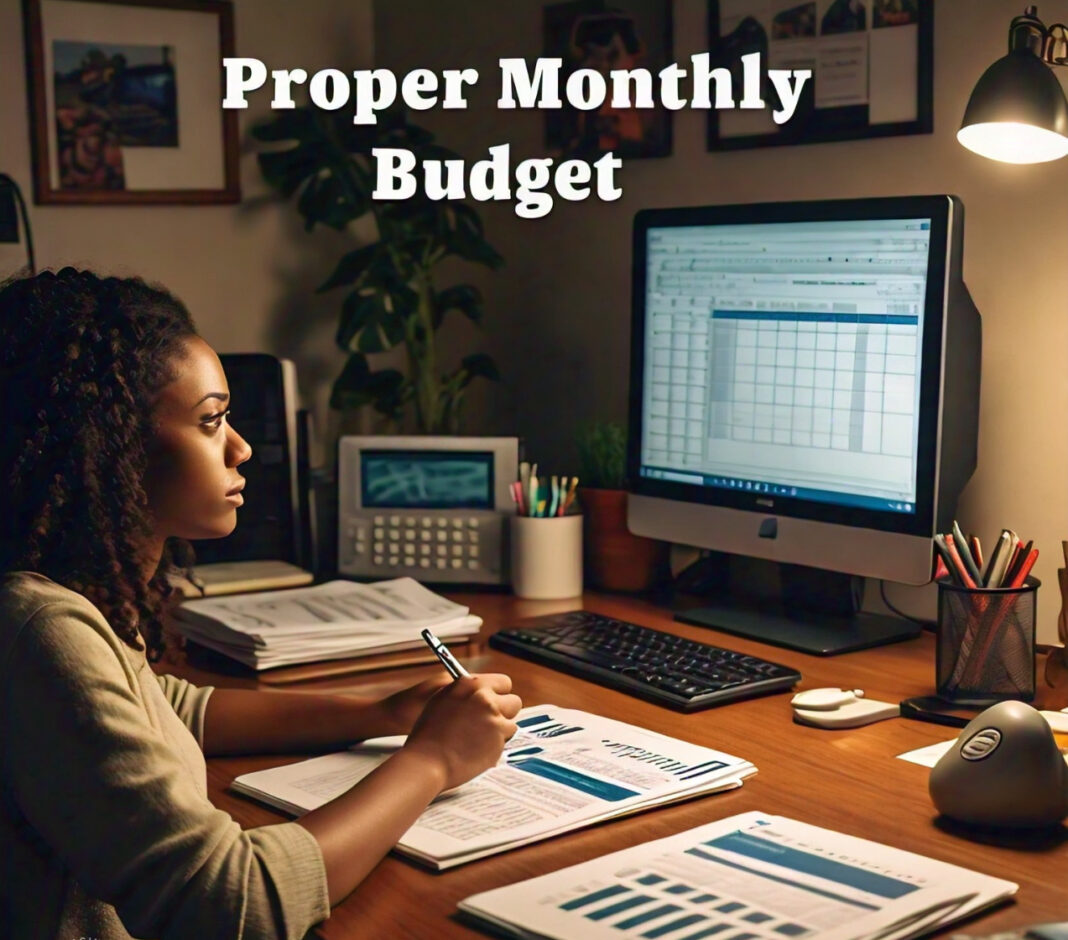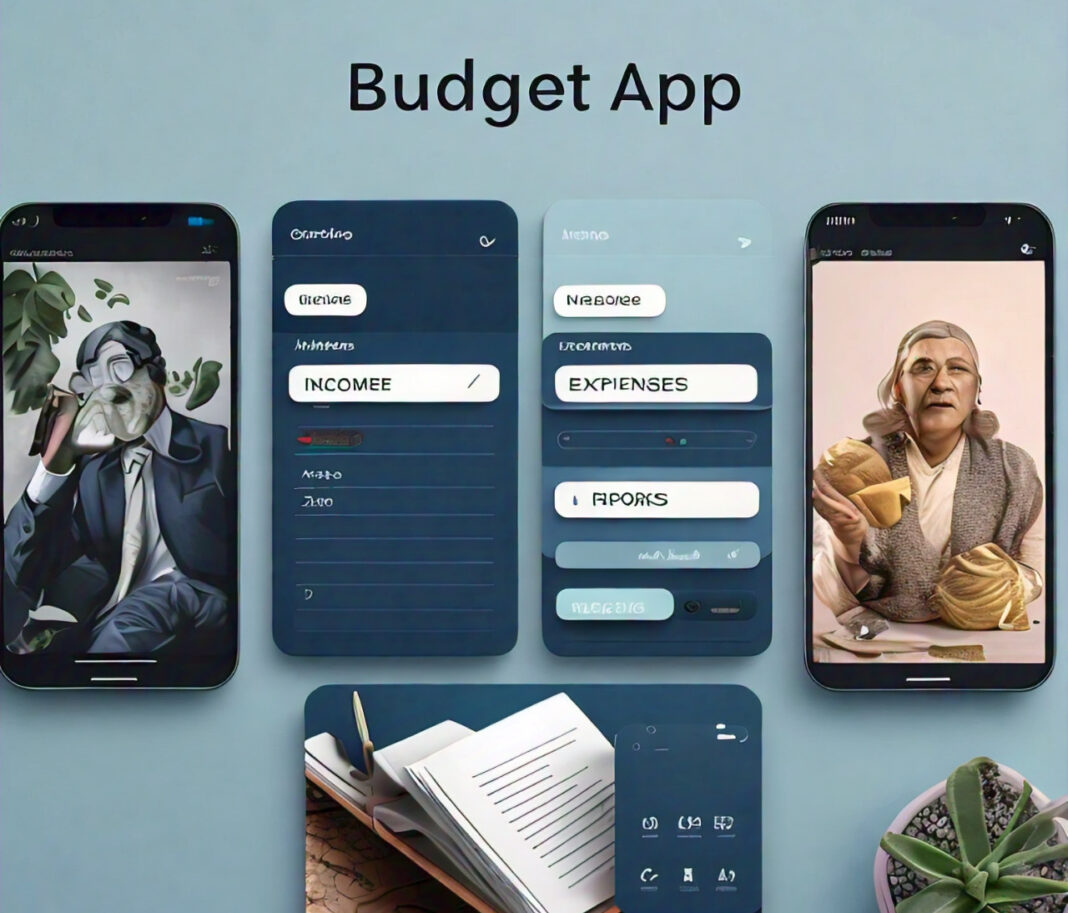The creation of a month-to-month budget is a giant leap toward financial stability and achieving your money goals. Whether you save up for a big purchase, try to get out of debt, or simply get better control over your finances, a well-planned budget may be the roadmap to success. We go further to find out how you can create a monthly budget that works for you and also give you some useful tips to follow so that you can make the most out of your money.

The backbone of any good budget is knowing precisely how much money you have coming in every month. This step is crucial to set realistic financial goals and plan expenses.
Calculating Your Total Monthly Income
List any sources of income first:
- Salary/wages
- Freelance/part-time job earnings
- Dividend and interest income
- Rental income
- Other regular sources of money
Next, add all of these together for your total monthly income. If your income tends to vary month to month, you may want to consider an average based on the last 3-6 months.
Net vs. Gross Income
Remember that you budget with net income, not gross income. Your net income is what you have available to spend after taxes and other deductions.
Tracking Your Expenses
Knowing how much you come in, the next thing you need to do is work out where it’s going. Expense tracking helps you get a better picture of where your money is going and gives insight into what you can cut back on.
Fixed Expenses
Begin to set your fixed expenses. These are those costs that don’t change very much each month. Examples include:
- Rent or mortgage
- Utilities: electricity, water, gas
- Insurance
- Loan payments
- Telephone and internet bills
Variable Expenses
List your variable expenses. These may vary from month to month:
- Groceries
- Transportation (gas, public transit fares)
- Entertainment/dining out
- Shopping (clothing, household items)
- Grooming/hygiene (haircuts, gym memberships)
Methods of Tracking Expenses
Tracking of expenses can be done through:
- Budgeting app or software
- Spending journal
- Bank/CC statements
- Apply the envelope system to cash expenses
Try to track your expenses for at least a month to get a realistic view of where your money is going.
Setting Financial Goals
Now that you have a good idea of your income and expenses, it’s time to set some real financial goals. These goals are going to drive your budget and keep you motivated to live within your means.
Short-term Goals
These include goals that you want to realize in the next year, such as setting up an emergency fund, paying a small debt, and vacation money.
Long-term Goals
Long-term goals take more than a year to achieve. Long-term goals include retirement savings, mortgage pay-off, and saving your money for your child’s education.
SMART Goal Setting
In setting your financial goals, make them SMART:
- Specific: Clearly define what you want to accomplish.
- Measurable: Define an exact number or a percentage
- Achievable: Ensure that realistically it is possible to achieve with your income and expenses
- Relevant: Show relevance to the overall plan of finances
- Time-bound: Target when you want to achieve that goal
Establishing Your Budget Categories
Next, you will want to divide your expenses into categories. This allows you to effectively allocate your income and ensure you are covering all vital expenses.
Essential Expenses
What are your needs? The must-haves:
- Housing
- Utilities
- Food
- Transportation
- Insurance
- Debt repayment
Savings and Investments
Don’t forget about your future, always account for:
- Emergency fund additions
- Retirement savings
- Other savings objectives
Discretionary Spending
This category involves spending money on non-essential items:
- Entertainment
- Eating out
- Hobbies
- Shopping-Non-essentials
Occasional Expenses
Don’t forget about expenses that don’t come up every month:
- Annual insurance premiums
- Holiday gifts
- Vehicle maintenance
- Home repairs
Choosing a Budgeting Method
There are many various popular ways of budgeting. Choose the one that most fits your lifestyle and financial goals.
The 50/30/20 Rule
This simple rule-of-thumb way to budget suggests that after-tax income be divided as follows:
- Needs (necessary expenses): 50%
- Wants (discretionary spending): 30%
- Savings plus debt repayment: 20%
Zero-Based Budgeting
The idea here is to assign every single dollar of your income to some kind of expense or savings category so that your income minus expenses = zero.
Envelope System
This is a cash-based system in which you will be placing physical cash in an envelope for pre-defined spending categories. When the envelope is out of cash, you have reached your limit in spending in that category.
Pay Yourself First
This technique’s approach is prioritizing savings by allocating part of your income towards savings goals first and then budgeting for other expenses.
Using Tools and Technology
Make the most of some modern tools to make budgeting easier and more efficient.
Budgeting Apps
The most commonly used apps include Mint, YNAB (You Need A Budget), and Personal Capital, which will let you track expenses, set goals, and visualize your budget.
Spreadsheets
If you’re more of a hands-on individual, take the time now to create your budget spreadsheet using Microsoft Excel or Google Sheets.
Automated Savings
Set it up so that money is taken out of your savings account with each payday so you know you are regularly working towards your goals.
Bill Pay Services
Utilize your bank’s bill pay service or set up automatic bill pays, for recurring bills, to help avoid late fees and also ease your budgeting process.
Adjusting Your Spending Habits
Creating a budget often makes it easy to identify areas in which you can cut spending. Here are a few strategies to help you adjust your habits:
Identifying Needless Expenses
Look for things to which you subscribe but don’t use, services you can eliminate or curb, and/or habits that are costing you more than they’re worth.
Cheaper Alternatives
For all of those necessary expenses, see if you have ways you could reduce costs:
- Shopping around for better insurance rates
- Use coupons and shop for groceries on sales
- Explore cheaper options for your phone plan
- Find free/low-cost entertainment
Practicing Mindful Spending
Before you make that purchase, ask yourself:
- Do I need this?
- Does this support my long-term goals regarding money?
- Can I wait and save up for it instead of buying now?
Cooking at Home
Eating out can be one of the biggest budget blowouts. Try meal planning and cooking at home to save on food costs.
Budgeting with Irregular Income
If your income is irregular from one month to another, budgeting is a little more challenging but not impossible.
Base Budget
To start, set up a budget based on your lowest expected monthly earnings. This will ensure that you can always pay your essential expenses.
Prioritizing Expenses
Identify your expenses in order of priority, then. In the good months, you can work your way further down the list.
Building a Buffer
In those higher-income months, set aside additional money to carry you through the leaner months.
Using Percentages
Rather than using fixed dollar amounts, consider budgeting with percentages of income. Let your budget flex along with earnings.
Staying Motivated and Accountable
Long-term budgeting requires sticking to it and involves a great level of motivation and accountability. Some helpful strategies for tackling these challenges include:
Celebrate Small Wins
Appreciate and celebrate the instance you may reach any milestone or stay within your budget for some time.
Find a Budget Buddy
Find yourself a friend or a family member who also budgets. You could share goals and the progress you have made so far and offer support to one another.
Visualize Your Progress
Use charts or graphs to visually track your progress in pursuing your financial goals. Watching yourself improve can be a powerful motivator.
Regular Check-ins
Carve out regular times to go over your budget and track your progress. This keeps you on top of your finances and enables you to make changes where necessary.
Coping with Financial Slumps
Even when you have the best-laid plans, there are those times when financial slumps can still occur. Here’s how to handle them:
Re-think Your Budget
If you encounter a setback, revisit your budget and pinpoint areas you can pare down for the time being.
Tap into Your Emergency Fund
That is what it is for. Don’t feel ashamed to use it when you genuinely need to.
Avoid Short Cuts
Try not to fall prey to resorting to credit cards or taking out loans when there is a shortfall. This may drag you deep into long-term financial trouble.
Seek Assistance When Needed
Do not be scared to seek expert advice from a financial advisor or credit counselor if you are in trouble.
Revisiting and Refining Your Budget
Your budget must be a living, breathing document that evolves with your life. Ongoing reviews will keep it relevant.
Monthly Checks
At the close of each month, check your actual spending against what you budgeted for. Identify any big discrepancies.
Quarterly Check-ins
Every quarter, reflect on your budget a little more deeply. Are you on track to meet your goals? Do you need to revise any of your categories?
Annual Overhaul
Every year, take the time to completely re-evaluate your budget. Consider any major life changes, rethink your goals, and make large adjustments where needed.
Life Event Adjustments
Major life events such as getting married, having a child, or changing jobs generally require immediate budget adjustments.
Conclusion
Therefore, establishing a very workable monthly budget is one of the finest ways to take control of your financial life and reach the set goals of money. You can come up with an efficient budget that works for your specific situation by understanding your income, tracking your expenses, setting clear goals, and choosing the right budgeting method for you.
Remember, budgeting is an art that gets perfected with practice. So, you mustn’t get discouraged if this doesn’t work out just perfectly at the start. Be flexible, learn from experience, and be ready to make alterations going forward. With patience and consistency, you will be able to develop a budget to keep your money flowing better and help you towards financial goals in the process.
Reaching financial stability and freedom begins with coming up with your budget for the month. Therefore, what are you waiting for? Take the first step today and take charge of your future.






